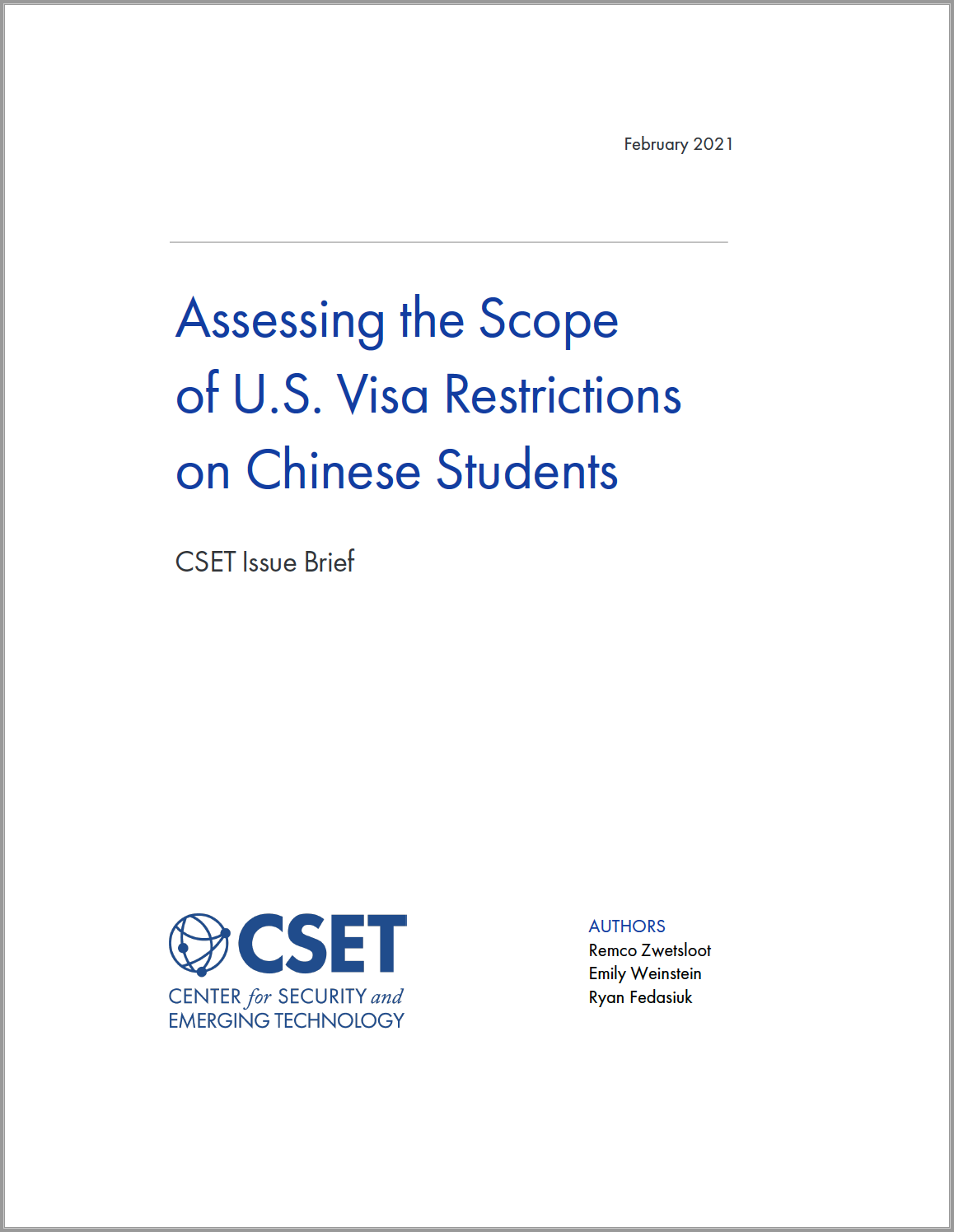Executive Summary
In May 2020, the White House issued a Proclamation barring Chinese graduate students and researchers from studying or working at U.S. universities if they previously had been affiliated with Chinese institutions that “implement or support” China’s military-civil fusion (MCF) strategy. This Brief summarizes what we know—and do not know—about the policy, and uses two new datasets to estimate how the policy’s impact would differ depending on how federal agencies define and operationalize “military-civil fusion.” It also compares the number of students who could be blocked by the Proclamation to the overall number of Chinese student enrollments at U.S. universities.
Our key findings are:
- The scope of the Proclamation is unclear because it leaves several of the key terms and concepts undefined.
- The Proclamation defines China’s MCF strategy as “actions by or at the behest of the PRC to acquire and divert foreign technologies, specifically critical and emerging technologies, to incorporate into and advance the PRC’s military capabilities.” This definition differs in substance and emphasis from how other U.S. government documents define MCF, complicating attempts to assess the impact of MCF-related policies.
- The Proclamation blocks individuals who have been affiliated with a Chinese entity that “implements or supports” China’s MCF strategy, though individuals who work in fields that “would not contribute” to China’s MCF strategy are exempt. The Proclamation does not specify what criteria will be used to judge which entities or fields are related to MCF.
- These and other uncertainties mean that assessments of the Proclamation’s likely impact need to be based on assumptions and estimates. This Brief presents such an estimate, focusing on the annual number of Chinese students whose visa applications would be denied under the Proclamation.
- Assumption: The MCF-related “entity” criterion likely targets a small number of Chinese universities that are on the Entity List, including the “Seven Sons of National Defense.”
- Eleven civilian Chinese universities on the U.S. Department of Commerce’s Entity List (which designates entities subject to strong export control requirements), including all members of the CCP-designated Seven Sons of National Defense.
- Chinese students may also be barred on other grounds, including past employment (at a company involved in MCF-related work or directly for government) or participation in a Chinese scholarship program. We do not have data on all such risk indicators, so our assessment is not comprehensive.
- Assumption: The MCF-related “field” criterion is likely to encompass all STEM enrollments.
- We were unable to find authoritative analyses or documents that list all academic fields relevant to MCF. However, our initial analysis of MCF technology lists suggest they are so broad that all STEM fields could be relevant in some way.
- At the Ph.D. level, 85 percent of Chinese Ph.D. students at U.S. universities are in STEM fields, compared to less than half of Chinese master’s students. Among graduates from Seven Sons or other Entity List universities, the share of Ph.D. students in U.S. STEM programs is 95 percent.
- Estimate: The Proclamation could block more than one-fifth of annual new Chinese enrollments in U.S. STEM graduate programs.
- To estimate what percentage of Chinese students are affected by the Proclamation, we suggest 3,000 to 5,000 as a reasonable range for the annual number of students affected. This number is in line with news reports, but due to the many sources of uncertainty we consider it a low-confidence estimate.
- This range reflects an estimate for the number of students rejected per year. As such, the most natural comparison group for our estimate is the annual number of new Chinese graduate enrollments in STEM programs. Our estimate of 3,000 to 5,000 blocked students equals between 16 and 27 percent of the roughly 19,000 Chinese STEM students who start U.S. STEM graduate programs per year.
- Our calculations reflect historical data from 2017 through 2019. Future enrollment changes due to COVID-19 and other political and economic trends add significant uncertainty to any impact forecast.
- Our analysis leaves several important questions unanswered.
- While the proclamation also applied to “researchers,” we were unable to perform detailed analysis of the number of affected researchers (those on J visas) due to a lack of data. Data gaps on international researchers are significant, and filling them should be a priority.
- We also recommend further data collection and analysis aimed at disaggregating master’s from Ph.D. students at U.S. universities; determining what academic fields are relevant to China’s MCF strategy; and measuring department- and lab-level affiliations at Chinese universities.
